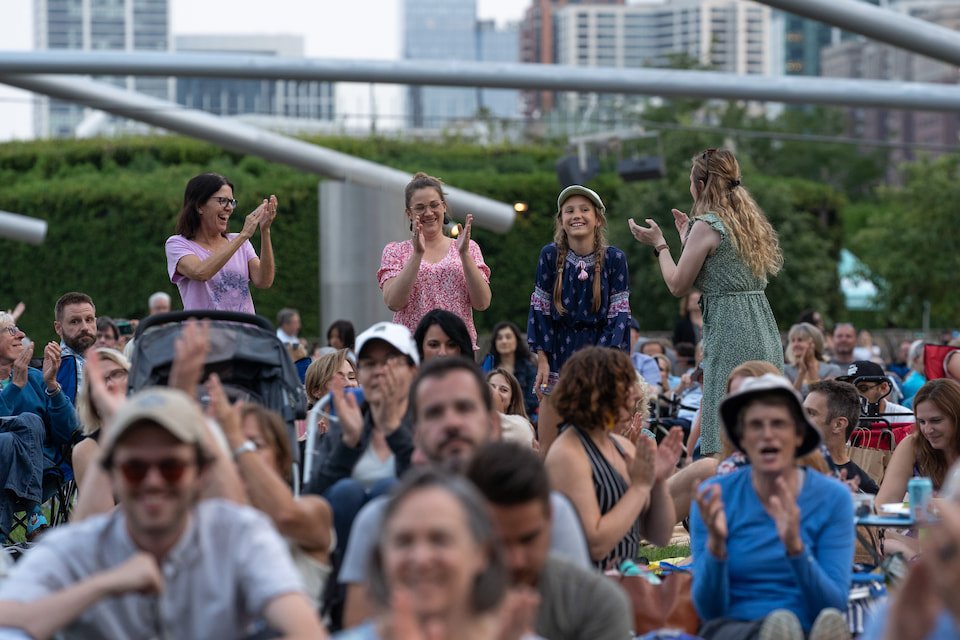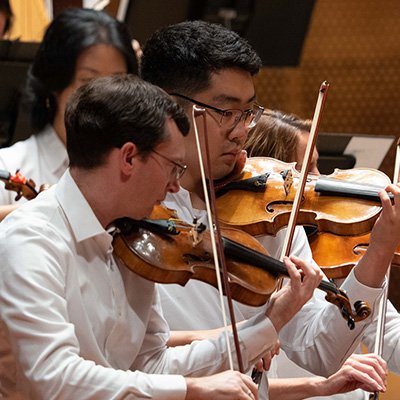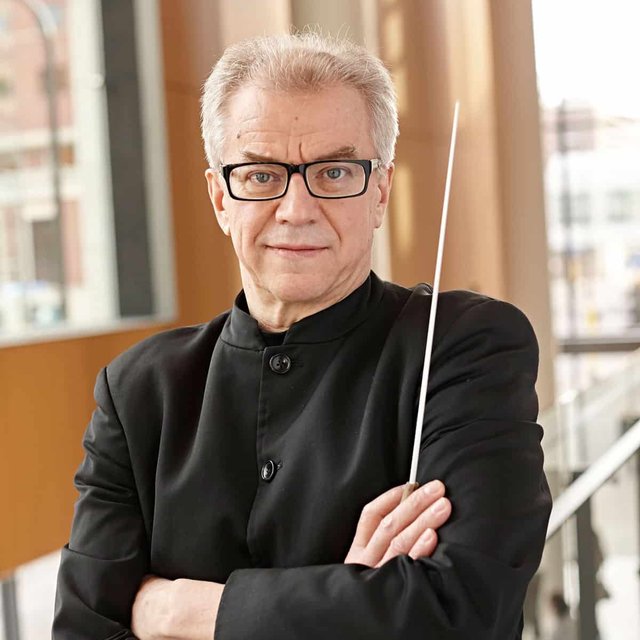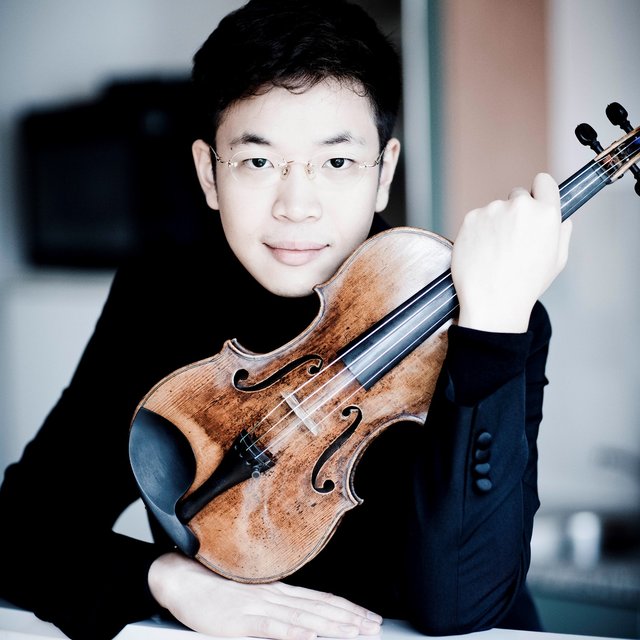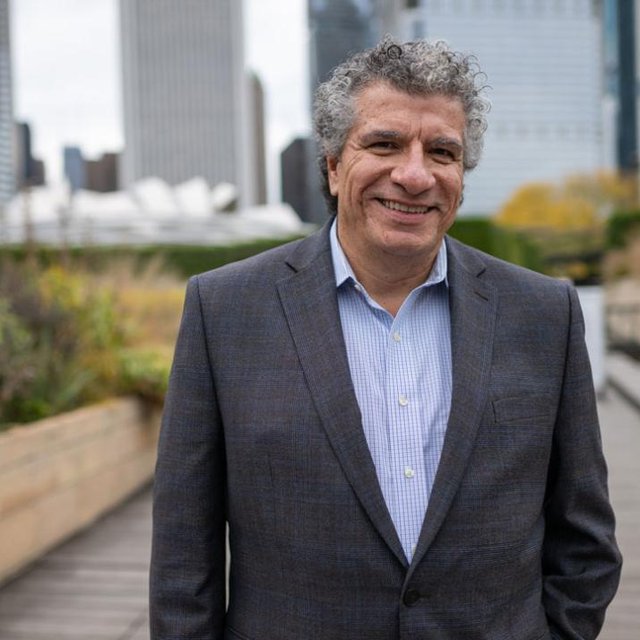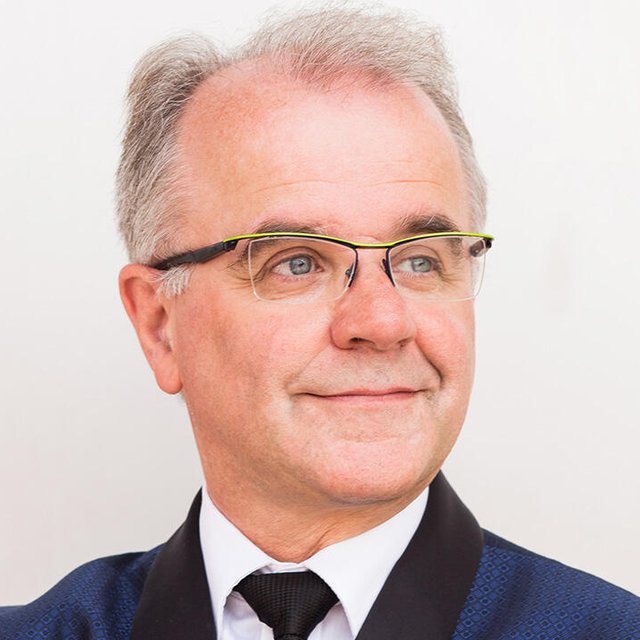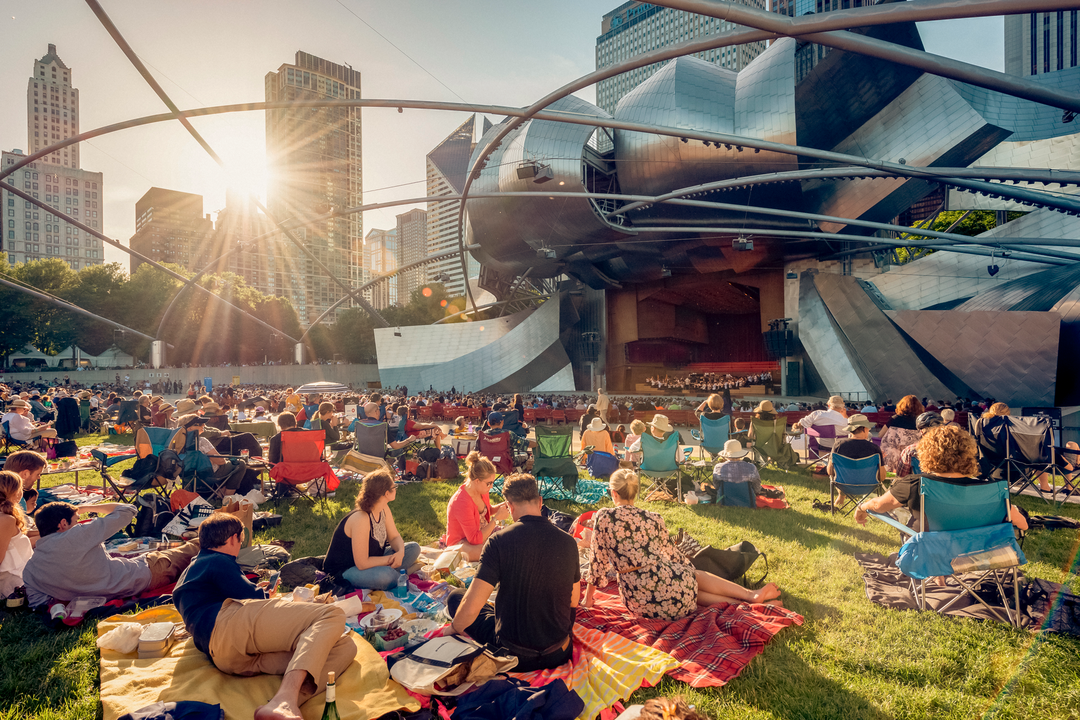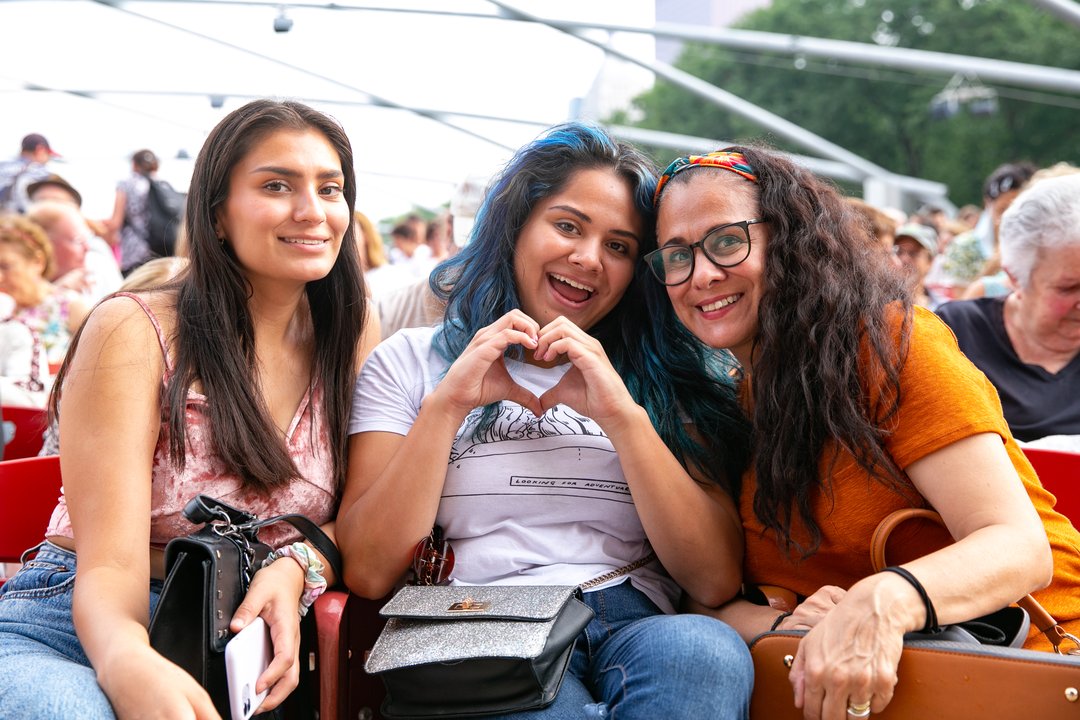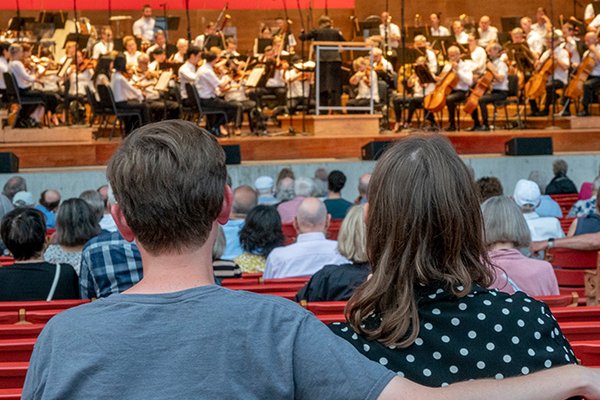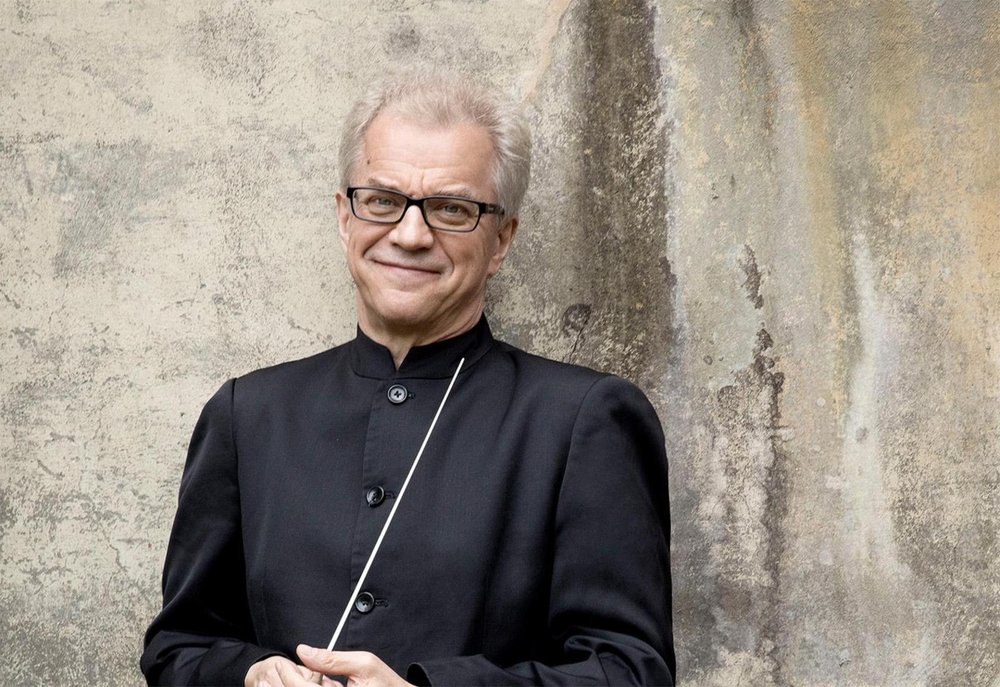
Beethoven Pastoral Symphony No. 6
Program
Henry Dorn Transitions (10 mins)
Max Bruch Scottish Fantasy (30 mins)
Prelude: Grave & Adagio cantabile
Allegro
Andante sostenuto
Finale: Allegro guerriero
Intermission (20 mins)
Ludwig van Beethoven Symphony No. 6, Pastoral (39 mins)
Awakening of cheerful feelings on arrival in the countryside
Scene by the brook
Merry gathering of country folk
Thunderstorm
Shepherd’s song
Cheerful and thankful feelings after the storm
Featuring
Program Notes
Henry Dorn (b. 1988)
Transitions (2019)
Scored for: three flutes including piccolo, three oboes including English Horn, three clarinets including bass clarinet, three bassoons including contrabassoon, four French horns, three trumpets, three trombones, tuba, timpani, percussion, piano, and strings
Performance time: 10 minutes
First Grant Park Orchestra performance
Countless composers have used their music to honor loved ones who have passed. Take Johannes Brahms’s German Requiem, for example, inspired by the death of his mother. Like Brahms, Henry Dorn channeled his grief over losing his mother to lung cancer in Transitions. Unusually, however, Dorn directly confronts the cruelty of the disease that claimed his mother. “I try to capture not the beauty we often try to find in the passing of a loved one, but the tumultuous, ravenous nature of this illness,” he writes in his program note. Dorn spent a month in the hospital with his mother as she lay dying in 2017. “It was there that I started to the write notes and ideas I felt about the experience, her journey, her unspoken strength, and her quiet inner beauty,” he said. Dorn revisited these sketches after taking some time to process his thoughts, completing the work in 2019. Transitions was premiered by the Minnesota Orchestra under Osmo Vänskä on May 6, 2022.
Dorn charts the progression of the disease through Transitions, beginning with a menacing fugal subject that quickly spreads throughout the orchestra. He captures the soundscape of the hospital, from the rising sound of the ventilator to the clanking of computer keyboards and rolling of hospital equipment. A quote of the “Dies Irae” chant hints at impending death. Amid this turmoil comes a moment of reprieve in the stillness of the night after everyone is gone. “I tried to imagine my mother’s thoughts and envisioned this state of serenity led by a melody I could see her humming. This was her unspoken strength, still present in the face of death,” he writes. After this moment of calm, the chaos of cancer returns with renewed vigor. In a nod to the instrument his mother played in school, the horns raise their bells for a steadfast melody, projecting her inner strength in the face of suffering.
Max Bruch (1838–1920)
Scottish Fantasy for Violin & Orchestra, op. 46 (1880)
Scored for: two flutes, two oboes, two clarinets, two bassoons, four French horns, two trumpets, three trombones, tuba, timpani, percussion, harp, strings, and solo violin
Performance time: 30 minutes
First Grant Park Orchestra performance: July 19, 1978; David Zinman, conductor and Isidor Lateiner, violin
According to Max Bruch, the violin “can sing a melody better than a piano, and melody is the soul of music.” Given his affinity for the instrument, it is no surprise that Bruch’s works for solo violin and orchestra have endured where most of his other compositions have not. Overshadowed during and after his life by his more original contemporary, Johannes Brahms, Bruch is largely remembered for two pieces: his Violin Concerto No. 1 and the Scottish Fantasy.
Although Bruch had never been to Scotland when he wrote the Scottish Fantasy in 1879, he was drawn to images of the country’s rugged landscapes and its rich folk music tradition. For authentic Scottish folk melodies, Bruch turned to The Scots Musical Museum, a collection of 600 folk songs compiled by James Johnson between 1787 and 1803 with the help of none other than Robert Burns.
The first movement opens with a somber trombone chorale, setting the stage for the solo violin’s brooding lament, evoking the image of an ancient castle arising from the mist. The clouds eventually disperse with a warm rendition of the folk song “Auld Robb Morris,” accompanied by the harp. The scherzo’s main theme is based on a vigorous dance tune called “The Dusty Miller.” Here, the soloist imitates a Scottish fiddler, while the low strings provide the drone of the bagpipes. After a false ending, the violas recall “Auld Robb Morris,” drawing the violin soloist back into their reverie. Proceeding without pause, the third movement is a set of variations on the lovelorn song “I’m a’doon for lack O’Johnnie.”
The finale, marked Allegro guerriero, is a warlike dance based on “Hey Tuttie Tatie.” Robert Burns used this tune for his patriotic poem “Scots, wha hae,” which imagines Robert the Bruce’s speech to his outnumbered army before the Battle of Bannockburn in 1314. According to traditional lore, his army played “Hey Tuttie Tatie” on the battlefield, which is why Burns chose the song. The triumphant battle cry contrasts with a more lyrical second theme, culminating in a wistful reflection on “Auld Robb Morris” before the exuberant finish.
Ludwig Van Beethoven (1770–1827)
Symphony No. 6 in F major, op. 68, Pastoral (1808)
Scored for: three flutes including piccolo, two oboes, two clarinets, two bassoons, two French horns, two trumpets, two trombones, timpani, and strings
Performance time: 39 minutes
First Grant Park Orchestra performance: July 19, 1937; Walter H. Steindel, conductor
Like many composers, Ludwig van Beethoven loved a good country walk to get the creative juices flowing. In the summers he would take up residence in the small towns on the outskirts of Vienna, using solitary walks to work through his compositions in his head. The peace he felt in nature was the inspiration for his “Pastoral” Symphony No. 6. Although written at the same time as his intensely driven Fifth Symphony (and premiered in the same concert in 1808), the more laid-back Pastoral Symphony provides a rare glimpse of Beethoven’s lighter side. Unlike Beethoven’s “heroic” symphonies, which go from struggle to triumph, the Pastoral Symphony comes full circle, returning to the state of normalcy in which it began.
The Pastoral Symphony is also unique among Beethoven’s oeuvre in that he gives a descriptive title for each movement. Although Beethoven cautioned that the symphony was “more an expression of feeling than of painting,” the titles suggest a program relating to his cherished summer holidays in the countryside, with musical illustrations of birdsong, peasant dances, babbling brooks, yodeling shepherds, and a thunderstorm. In his pastoral evocations, Beethoven was building on at least 300 years of musical tradition, with Haydn’s pastoral oratorios The Creation and The Seasons serving as recent models. Where Beethoven’s symphony excels is that, rather than just being effects, the explicit programmatic elements all serve a structural purpose within the scope of symphonic form. Beethoven achieved a delicate balance in writing something with programmatic intent without compromising musical integrity or veering into kitsch.
The first movement, “Awakening of Cheerful Feelings upon Arriving in the Country,” opens with a blithe melody in the first violins over a soft drone in the cello and viola. Across the movement, Beethoven creates a feeling of serenity and stability by avoiding dissonances, favoring root-position chords, and staying in one key for long periods. Even with his sparing use of melodic and harmonic material, he maintains textural interest through his masterful orchestration.
“Scene by the Brook” is even more spacious than the preceding movement. Water gently flows in streams of eighth notes, ending with a classical cadenza of bird song. In the score, Beethoven even notates which bird each instrument is meant to evoke: nightingale (flute), quail (oboe), and cuckoo (clarinet). Next, Beethoven injects some humor into the symphony in the scherzo (“Merry Gathering of Countryfolk”), using rhythmic displacement to imitate a village tavern band struggling to keep it together.
A fierce summer storm interrupts the party in the next movement. Storm scenes were a cliché of pastoral music, but Beethoven scores it with such precision and economy that it has more impact than most. The storm builds from distant thunder, depicted by pianissimo tremolos in the low strings. Raindrops begin to fall in staccato eighth notes in the violins. Reserving the timpani, trombones, and piccolo for this movement, Beethoven deploys the orchestra’s full forces in a thunderous crescendo. The storm eventually passes, and an ascending flute scale leads seamlessly into the radiant final movement, “Shepherd’s Song—Happy, Thankful Feelings After the Storm.”
—Katherine Buzard
Artistic Leadership
Support The Festival
Violin I
Jeremy Black, concertmaster
Vacant, assistant concertmaster
Trista Wong
Zulfiya Bashirova
Jennifer Cappelli
Injoo Choi
Dima Dimitrova
Erica Hudson
Hyewon Kim
Matthew Lehmann
Jayna Park
Rika Seko
Karen Sinclair
Bonnie Terry
Krzysztof Zimowski
Violin II
Liba Shacht, principal
Vacant, assistant principal
Ying Chai
Ran Cheng
Karl Davies
Likai He
Ann Lehmann
Laura Miller
Cristina Muresan
Kjersti Nostbakken
Irene Radetzky
Jeanine Wynton
Thomas Yang
Viola
Terri Van Valkinburgh, principal
Yoshihiko Nakano, assistant principal
Elizabeth Breslin
Beatrice Chen
Amy Hess
Rebecca Swan
Chloé Thominet
Cello
Walter Haman, principal
Peter Szczepanek, assistant principal
Calum Cook
Larry Glazier
Steven Houser
Eric Kutz
Eran Meir
Double Bass
Colin Corner, principal
Peter Hatch, assistant principal
Andrew Anderson
Christian Luevano
Samuel Rocklin
Chunyang Wang
Chris White
Flute
Vacant, principal
Alyce Johnson
Jennifer Lawson, assistant principal
Piccolo
Jennifer Lawson
Oboe
Mitchell Kuhn, principal
Vacant
Anne Bach, assistant principal
English Horn
Anne Bach
Clarinet
Dario Brignoli, principal
Trevor O’Riordan, assistant principal
Besnik Abrashi
Bass Clarinet
Besnik Abrashi
Bassoon
Eric Hall, principal
Nicole Haywood Vera Tenorio, assistant principal
Vacant
Contrabassoon
Vacant
Horn
Vacant, principal
Stephanie Blaha, assistant principal
Neil Kimel
Brett Hodge
Paul Clifton
Trumpet
David Gordon, principal
Mike Brozick
Vacant, assistant principal
Vacant
Trombone
Daniel Cloutier, principal
Jeremy Moeller, assistant principal
Bass Trombone
Alexander Mullins
Tuba
Andrew Smith, principal
Timpani
Daniel Karas, principal
Josh Jones, assistant principal
Percussion
Josh Jones, principal
Vacant, assistant principal
Doug Waddell
Harp
Kayo Ishimaru-Fleisher, principal
Keyboards
Christopher Guzman
Orchestra Librarian
Eliza Bangert, principal
Grant Park Chorus
* denotes leave-of-absence † 2025 Vocal Fellow
Laura Lynch Anderson
Kristina Bachrach
Madalynn Baez
Megan E. Bell
Alyssa Bennett
Tamara Bodnar
Kylie Buckham
Anna Joy Buegel
Laura Bumgardner
Katherine Buzard
Bethany Clearfield
Nathalie Colas
Carolyne DalMonte
Megan Fletcher
Kaitlin Foley
Saira Frank
Julia Frodyma
Katherine Gray-Noon
Kimberly Gunderson
Alexandra Ioan
Alexandra Kassouf
Darlene Kelsey
Olivia Knutsen
Marybeth Kurnat
Katelyn Lee
Kyuyim Lee+
Rosalind Lee
Veronica Mak
Hannah Dixon McConnell
Marie McManama
Kathleen Monson
Susan Nelson
Evangeline Ng
Máire O'Brien
Alexandra Olsavsky
Laura Perkett
Angela Presutti Korbitz
Alexia Rivera
Veronica Samiec
Emily Sinclair
Molly Snodgrass
Tiana Sorenson
Christine Steyer
Sarah van der Ploeg*
Lydia Walsh-Rock
Sherry Watkins
Emily Amesquita
Melissa Arning
Christina Bernardoni
Angela Born
Bethany Brewer
Julie DeBoer
Leah Dexter
Katrina Dubbs
Stacy Eckert
Margaret Fox
Catarine Hancock
Ruth Ginelle Heald
Sophia Heinz
Miya Higashiyama
Carla Janzen
Amy Allyssa Johnson
Kathryn Kinjo Duncan
Amanda Koopman
Anna Laurenzo
Jeannette Lee
Thereza Lituma
Chelsea Lyons
Victoria Marshall
Jessica McCarthy
Quinn Middleman
Ella Peters
Sarah Ponder
Emily Price
Stephanie Schoenhofer
Suzanne A. Shields
Marissa Simmons
Cassidy Smith
Aidan Spencer
Alannah Spencer
Margaret Stoltz
Carolyn Sundlof Boudreau
Gabrielle Timofeeva López
Elizabeth Vaughan
Corinne Wallace-Crane
A.J. Wester
Debra Wilder
Isabel Yang+
Charles Anderson
Enrico Giuseppe Bellomo
Justin Berkowitz
Madison Bolt
Hoss Brock
Steven Caldicott Wilson
Opal Clyburn-Miller+
John J. Concepción
Micah Dingler
Jared V. Esguerra
Alec Fore
Ace Gangoso
Klaus Georg
Tejas Gururaja
Paul Hunter
Garrett Johannsen
William Johnson
James Judd
Tim Lambert
Tyler Lee
Stephen D. Noon
Marcos Ochoa
Brett Potts
Nicholas Pulikowski
Peder Reiff
Samuel Rosner
Matthew W. Schlesinger
Joe Shadday
Aaron Short
Brian Skoog
Michael St. Peter
Ryan Townsend Strand
Alan Taylor*
Sean J. Watland
Nate Widelitz
Walter Aldrich
Evan Bravos
Matthew Brennan
Michael Cavalieri
Ryan J. Cox
Ed Frazier Davis
Lifan Deng
Matthew Dexter+
Chris DiMarco
Christopher Filipowicz
Dimitri German
Dominic German
David Govertsen
Spencer Greene
Brian Hupp
Jan Jarvis
Jess Koehn
Eric Miranda
Ian Morris
Ian Murrell
John E. Orduña
Wilbur Pauley
Douglas Peters
Jackson Pierzina
Martin Lowen Poock
Ian Prichard
Dan Richardson
Stephen Richardson
Benjamin D. Rivera
Scott Uddenberg
Schyler Vargas
Vince Wallace
Aaron Wardell
Ronald Watkins
Jonathon Weller
Peter Wesoloski
Jonathan Wilson
Chuck Foster
John Goodwin
Kyuyim Lee
Isabel Yang
Opal Clyburn-Miller
Matthew Dexter
